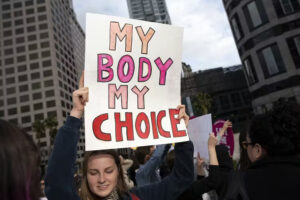
The moment when certain rights were made exclusive to men, and women were not allowed the same amount of freedom, gender became a political issue. We shall start the discussion of this issue with the recent concern over a transgender swimming champion in the US. A transgender woman became the NCAA’s (National Collegiate Athletic Association) Division I’s first transgender champion in recorded history. And that is what created problems. Can we really consider Transgender as belonging to a particular gender after sex reassignment surgery? People now think that this has arisen as a new problem in Feminism.
Personally, I feel that the issue of Transgender being included in either of the two genders won’t arise if there is a bar for another gender. The problems have arisen due to medical reasons, then societal reinforcement, and finally the state’s refusal to change the status quo. This is just one aspect of gender issues that entails dealing with the body. The issue around women and the state is also known as Body Politics. Let us see how and where exactly the power lies amidst all of this.
To begin with body politics, it refers to the procedures and laws used by societal authorities to manage the human body as well as the conflict over the scope of personal and societal control. In society, body politics involve various ways to subordinate women’s bodies. In body politics, there are many different types of power at work, including institutional power found in laws and government, disciplinary power enforced in economic production, discretionary power used in consumption, and personal power negotiated in close relationships. When people or movements want to lessen the oppressive impacts of institutional and interpersonal authority on people whose bodies are stigmatised as inferior or who aren’t allowed to have control over their own bodies, they engage in body politics. Therefore, as we see the second wave of feminism, body politics arose due to the abortion debate in the US.
Politics has and still incorporates the female body. Politics is impacted by the concept of “femininity,” which includes the feminine body. In the past, the isolation of women from the public realm was used, among other things, to justify the weakness of the female body. The unachievable ideal of today requires women to have the (self-)discipline of taking care of their looks. Your own body turns into a means of social injustice. The supposed naturalness of the female body model must be exposed in order for women to be free. The body can be even used as a weapon in a political conflict.
Politics has a direct impact on the way we live in our bodies. It arises from the way power has been allocated. The idea that the state and men have control and the authority to dictate women’s bodies arise from power dynamics. The concept of power surrounding women’s bodies and the involvement of the state in that power dynamic is complex and multifaceted. Throughout history and across different cultures, women’s bodies have been subjected to various forms of control, regulation, and exploitation. These power dynamics are influenced by societal norms, cultural beliefs, and political systems.

One aspect of power surrounding women’s bodies is reproductive control. Women’s reproductive capabilities have long been a subject of regulation and control by both religious and state authorities. Policies regarding contraception, abortion, and access to reproductive healthcare have been used as tools for exerting control over women’s bodies and their reproductive choices. In some cases, states have enforced restrictive policies that limit women’s autonomy and reproductive rights, while in other cases, they have sought to empower women by ensuring access to reproductive healthcare and education. The best example here would be the recent overturning of the Roe VS Wade verdict which gave women in the US the right to abortion.
Another aspect of power surrounding women’s bodies relates to societal expectations and standards of beauty. Women often face immense pressure to conform to certain body ideals, which are often reinforced by media, advertising, and cultural norms. This pressure can lead to body image issues, low self-esteem, and even harmful practices such as eating disorders. The state may contribute to these power dynamics by promoting or endorsing certain beauty standards through policies or regulations, or by failing to address the harmful effects of unrealistic body ideals.
Violence against women is another area where power dynamics surrounding women’s bodies intersect with state involvement. Gender-based violence, including domestic violence, sexual assault, and harassment, is a pervasive issue worldwide. The state plays a crucial role in addressing and preventing such violence through legislation, law enforcement, and support services. However, the state’s response to gender-based violence can vary significantly, ranging from inadequate protection and justice for survivors to comprehensive legal frameworks and support systems.
Changing the status quo would be difficult since letting go of one’s privileges is not easy. Therefore, it would require the issue of sex and gender a subject of analysis in not only the gender discourse but also the public discourse. It is necessary to view the oppression of women as a societal tendency rather than a private affair. Women’s place and role in society were determined by their bodies, over which they themselves didn’t have any control.
As we saw above, how ‘men’ have used various aspects of power to significantly reduce women’s role, the need for state legislation is important. The second wave of feminism is vital in the aspect that it encouraged speaking out about sexual assault, rape, and other forms of violence against women and girls, which many saw as extreme manifestations of socially acceptable male authority. It normalised conversations around the female anatomy to a certain extent but didn’t really create many changes.
A social change is necessitated by a political one. In situations where the law is discriminatory to women, the pursuit to achieve female bodily freedom is pushed back another century. The recent overturning of the Roe VS Wade case has taken back the freedom that gave women legal power. The state, in such a scenario, can intervene to balance the situations. However, gender politics is deeply connected to bodily politics. Unless and until we have more women on the table, the state would always be discriminatory to the underrepresented gender.

